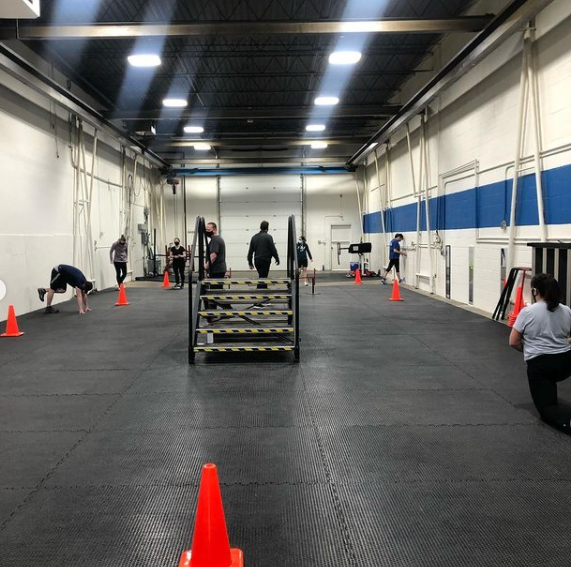
Thinking about becoming a correctional peace officer (CPO) in Canada? Let’s explore what a CPO does, why it’s a great job and what to expect while on duty!
CPOs perform a variety of security-related duties in adult correctional centres, young offender facilities and community corrections facilities.
There are many benefits to being a correctional officer, such as:
- Excellent benefits, job security and a strong pension and pay;
- Career opportunities and growth across Alberta in the field of law enforcement;
- Rewarding and challenging work with a professional team of co-workers;
- Paid training and promotional opportunities in a variety of areas or departments;
- Helping others and being a strong role model;
- A broad variety of experiences and daily challenges!
A CPO ensures the care and custody of inmates at remand and sentenced correctional facilities, plus ensuring the safety of the staff, external stakeholders such as nurses, teachers and program staff, as well as members of the public in the communities they serve. Some of the daily duties of a CPO are to supervise inmates, providing basic needs such as meal delivery, medication supervision, visitation and ensuring inmates make it to their court matters. Correctional officers monitor and supervise large groups of inmates with complex mental health, anger management and addictions needs, ensuring peace and order at all times. As well, they keep detailed log entries, shift communications and records of events and emergencies to ensure all team members are aware of the logistics of the shift prior. Officers frequently deal with emergency situations such as medical emergencies, physical fights between inmates, suicide attempts and drug smuggling or contraband.
What is expected of a CPO?
CPOs must have strong common sense, sound judgment and maintain a high level of integrity, accountability and maturity at all times. They must be able to communicate effectively, be a confident leader and be able to problem solve quickly and safely.
A CPO must work under pressure, as they often experience hostile work environments and emergency situations. If you feel like you would benefit from strengthening your ability to perform under pressure, you may benefit from BLFT’s Spartan Strong workshop.
What do you need to become a correctional peace officer in alberta?
Blue Line Fitness Testing can help you become a Correctional Officer with our Standard First Aid courses, CPR Level-C certification, Interview Preparation sessions and practice and certification testing for the completion of the Correctional Officer Physical Abilities Test (COPAT)

The Spartan Strong workshop teaches you how to not ‘get in your head’.
It is designed to overcome barriers through goal setting, setting up a successful routine and guided imagery practices.
What to expect during the COPAT test
To pass the COPAT for Alberta Corrections, the participant must perform all activities as per the defined protocol and complete the timed portion of the test within 3:20 minutes, and then demonstrate the ability to lift and carry the 80 lb torso bag a distance of 50′.
The COPAT test is made up of 6 stations that simulate a correctional environment:
- STATION 1: 50′ RUN.
- During the performance of their duties, corrections officers often need to run short distances quickly to get to the incident.
- STATION 2: THE STAIR RUN, where the participant runs up and down a set of six stairs, six times in a row.
- Most correctional facilities have several flights of stairs in living units and additional stairwells that can be accessed during emergency situations such as fights, evacuations, fires, and medical emergencies and this obstacle simulates the effort you will need to respond quickly to an emergency.
- STATION 3: THE MOBILITY, AGILITY, AND SPEED OBSTACLE COURSE (30 METERS)
- This simulates movement through potential obstacles in a living unit or common area of a correctional facility such as small hurdles and tight corners and turns.
- STATION 4: PHYSICAL CONTROL SIMULATOR (THE PULL AND PUSH STATION)
- At this station, participants demonstrate control of 70 pounds of resistance while moving in 6, 180-degree arcs for the pull and another 6, 180-degree arcs for the push. The weight must remain suspended for the entire 6 arcs in both the push and pull. This machine simulates physically fighting with an individual in a restraint situation and escorting an inmate by a single arm.
- STATION 5: MODIFIED SQUAT-THRUST-AND-STAND AND VAULT RAIL
- This station pushes the participant to their maximum heart rate by having the recruit perform 10 down and up activities and 9 vaults over a 3 foot vault in a row. Participants start on their chest with their chest, hips and toes touching the mat, then jump up, vault over the 3 foot obstacle with only their hands touching the vault bar, land with control on their feet on the other side and then lay down on their back with shoulder blades, buttocks and heels touching the mat. They then get up and repeat this for a total of 10 times. This activity is generally the most challenging portion of the COPAT and where most participants struggle. This simulates the level of exertion you will be at if you needed to be in a physical altercation by yourself while backup officers arrived.
- STATION 6: WEIGHT CARRY
- Despite not being a timed station, this station is necessary to successfully complete the test and is a PASS or FAIL. The purpose of this station is to remove an inmate or rescue your co-worker from an emergency situation. The 80lb weighted bag is the average weight of a male torso, and it is the last activity to complete. The bag must be held at waist height while the participant walks with it for a distance of 50 feet.
Learn more about the COPAT and the specific stations here.
What happens after you complete the COPAT test?
If you are successful in passing your interview, you will be invited to attend a 5 day Wage Orientation training at the correctional facility you are hired at. This training is an introduction to the basic knowledge you will need to begin working in a correctional facility and will orient you to the physical layout of where you will be working. You will then work shadow shifts with an experienced officer to gain on the job training before you are placed as an officer. Once you have completed these stages, you will be selected to attend the Correctional Services Induction Training, a 9 week program at the Alberta Justice and Solicitor General Training Academy in Edmonton.







